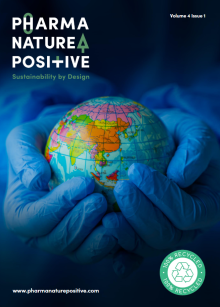The environmental impact of the pharmaceutical industry is hard to quantify, but it has been suggested Pharma may be responsible for 300 million tons of plastic waste each year while its carbon footprint could make up 4.4% of total global emissions.¹,² There are big incentives for Pharma to become more sustainable; companies demonstrating progress in this area are more likely to attract investors, while complying with regulations and meeting regional targets. They are also more likely to help create a healthier world – not just through the medicines they deliver, but in the way they develop and manufacture these products.
Today’s pharma industry needs to go beyond basic regulations that require environmental risk assessments and minimise pollution. The EU’s Circular Economy Action Plan is a key component of the European Green Deal that focuses on key value chains like electronics, batteries, packaging, and textiles. Although Pharma might not fall precisely within those sectors, our industry could play an important part in transitioning towards a more sustainable, circular model, reducing waste and resource depletion.
Companies can adapt in a variety of ways to incorporate environmental responsibility into every process. Some examples, which will be discussed here, include the monitoring and management of effluent and air particulates, recycling materials from waste streams, sourcing of green energies, re-shoring programmes, and the use of recyclable materials wherever possible. Whether it’s reducing, re-using, or recycling, any and all of these initiatives need to be embraced by Pharma.
Pollution Management
While the major source of pharmaceuticals in the environment is believed to result from patient use of medicine and subsequent excretion, other sources can include industrial emissions during the manufacture of pharmaceuticals.³ Active pharmaceutical ingredients (APIs) have been found in sewerage water, surface water, groundwater, soil, air, and local ecosystems, in concentrations ranging from sub-ng/L to more than μg/L.⁴ Waste from pharmaceutical manufacturing sites can have harmful effects on the environment, and it has been linked to the development of antimicrobial resistance (AMR), which is recognised as one of the greatest public health challenges in the 21st century.









